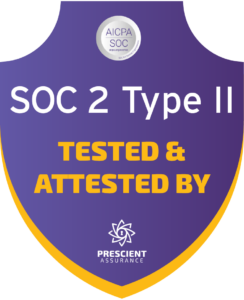Introduction to Differences Between a Self-Insured Retention and a Deductible

When working with clients seeking business insurance solutions, one of the most critical yet misunderstood concepts involves the distinction between self-insured retention and traditional deductibles. These risk retention mechanisms appear similar on the surface, but their operational differences can significantly impact your client’s financial exposure, coverage access, and claims management experience.
Understanding these distinctions allows insurance professionals to provide more accurate coverage guidance while helping clients make informed decisions about their risk financing strategies. The choice between these options affects everything from cash flow management to defense counsel selection, making it imperative that brokers and agents can articulate these differences clearly.
What is Self-Insured Retention?
Definition
A self insured retention represents a set dollar amount that the named insured must pay before insurers assume coverage obligations for a claim. Operating as a condition precedent to coverage, the SIR means the carrier has no responsibility to provide coverage or defense until the insured satisfies this financial threshold. This retention provision creates a gap where the insured bears complete responsibility for managing and funding the claim up to the specified amount.
Unlike traditional deductible structures, insurance retention requires the insured to handle claims investigation, settlement negotiations, and reasonable defense costs entirely independently until reaching the attachment point. Coverage only becomes available once the insured demonstrates they have satisfied their retention obligation through actual payments or established reserves.
How It Works
Under an SIR provision, the insured functions as their own insurer for losses within the retention limit. This means managing every aspect of claim handling, from initial investigation through potential litigation. The insured must secure their own defense counsel, negotiate settlements, and pay all associated costs without any involvement from the underlying policy carrier.
The SIR limit operates independently from the annual aggregate limit, meaning each occurrence requires the insured to satisfy the full retention amount before accessing coverage. For continuing loss scenarios, the insured may need to exhaust multiple retention amounts depending on policy forms and the nature of the claims.
When the retention is satisfied, carriers step in to provide coverage up to policy limits. Still, the insured has already absorbed significant costs and management responsibility. This structure requires sophisticated claims management capabilities and substantial financial reserves to handle potential exposure.
What is a Deductible?
Definition
An insurance deductible represents the amount the insured agrees to pay toward each covered loss, but carriers maintain primary responsibility for claims handling from the first dollar of loss. Unlike self-insured retention, a deductible provision allows the insurer to manage the entire claim while seeking reimbursement from the insured for their portion.
The liability insurance policy remains fully effective regardless of whether the insured has funds available to pay the deductible amount. Carriers provide immediate coverage, defense, and claims management services, then recover the agreed-upon deductible through various collection mechanisms.
How It Works
When a claim occurs under a policy with large deductibles, carriers immediately assume control of the claim investigation, defense counsel selection, and settlement negotiations. The insured benefits from the carrier’s claims expertise and established vendor relationships while maintaining predictable exposure limited to the deductible.
The insurer typically advances all defense costs and settlement amounts, then bills the insured for amounts within the deductible provision. This arrangement maintains the insured’s access to the carrier’s negotiated billing rates and preferred counsel, often resulting in more efficient claim resolution and claims adjustments.
Small deductibles operate similarly but with reduced administrative complexity. Carriers handle all aspects of the claim while the insured reimburses their portion, creating a straightforward cost-sharing arrangement that doesn’t impede coverage access.
Key Differences Between Self-Insured Retention and Deductible
Financial Responsibility
The most significant distinction lies in how financial responsibility shifts between the parties. With self-insured retention, the insured bears complete financial responsibility until satisfying the SIR limit, including all defense expenses and indemnity costs. This creates an immediate cash flow impact and requires substantial reserves.
Deductible structures allow carriers to advance all costs, creating a more manageable cash flow situation for the insured. The insurer may require collateral requirements or letter of credit arrangements for substantial exposures, but the insured isn’t required to fund claims from their operating capital immediately.
Risk management professionals must consider their client’s ability to handle the financial demands of different retention mechanisms. Companies with strong balance sheets may benefit from the premium savings associated with higher self-insured retention limits. In contrast, others may prefer the predictability of deductible arrangements.

Coverage Scope
Self-insured retention creates a coverage gap where the liability insurance policy provides no protection until the retention is satisfied. This means the insured has no access to the carrier’s defense network, negotiated rates, or claims expertise for SIR costs.
Traditional deductibles maintain full coverage from the first dollar of loss, with carriers providing complete claims management services regardless of the loss size. This arrangement ensures consistent application of policy language and interpretation across all claims.
The distinction becomes critical when evaluating coverage excess arrangements or multiple policies with different retention mechanisms. Insureds must understand that self-insured retention represents actual gaps in coverage, not just cost-sharing arrangements. This can be particularly important when considering an umbrella policy or other insurance clauses.
Risk Management Strategies
Self-insured retention requires sophisticated internal capabilities or third-party claims administration services. The insured must develop systems for claims reporting, investigation, defense counsel selection, and settlement authority that mirror those of professional carriers. This includes the ability to contest claims and manage reasonable defense costs effectively.
Deductible arrangements leverage the carrier’s existing infrastructure, allowing smaller companies to access enterprise-level claims management without internal investment. This can result in more consistent outcomes and lower overall insurance costs when considering both premiums and claims management expenses.
The choice impacts how businesses structure their programs, internal reserves, and relationships with service providers. Companies selecting self-insured retention must invest in claims management capabilities that deductible arrangements provide automatically. This may include implementing an NVP clause (named versus proven) to manage claims involving additional insured parties.
Situations for Choosing Self-Insured Retention

Business Size and Type
Large corporations with established departments often find self-insured retention arrangements provide greater control over claims outcomes and lower total insurance costs. These organizations typically have the financial capacity to handle retention amounts and the expertise to manage claims effectively.
Commercial general liability exposures in certain industries may benefit from self-insured retention structures due to the predictable nature of claims and the organization’s ability to implement effective loss prevention programs. Construction companies, manufacturers, and healthcare organizations often find these arrangements align well with their operational capabilities.
Smaller businesses generally benefit more from traditional deductible structures that provide access to professional claims management without requiring internal infrastructure development. The cost savings from higher retentions rarely offset the risks associated with inadequate claims handling for these organizations.
Risk Tolerance
Organizations with high tolerance and strong financial positions may accept the uncertainties associated with self-insured retention in exchange for greater control over claims outcomes and potential savings. These companies view retention as an opportunity to influence claims resolution directly and manage limits erosion more effectively.
Conservative approaches typically favor deductible structures that provide predictable exposure and professional claims handling. Companies prioritizing stability over potential savings find deductible arrangements align better with their overall business strategy.
The decision must consider the organization’s ability to handle adverse claims development, including the possibility of multiple large losses occurring within short periods. Self-insured retention amplifies the impact of poor loss history and requires greater reserves than deductible arrangements.
Conclusion
Summary of Key Points
The distinction between self-insured retention and deductibles extends far beyond simple definitions. Self-insured retention creates actual coverage gaps where the insured assumes complete responsibility for claims management and funding, while deductibles represent cost-sharing arrangements that maintain full carrier involvement from the first dollar amount of loss.
These structural differences impact every aspect of claims handling, from defense costs management to settlement authority. Insurance professionals must understand that self-insured retention requires clients to possess sophisticated claims management capabilities and substantial resources, while deductible arrangements provide access to carrier expertise and infrastructure.
The choice between retention mechanisms should align with the client’s financial capacity, sophistication, and overall business objectives. Neither approach is inherently superior, but each serves different organizational needs and profiles.
Encouragement to Evaluate Options
Insurance professionals should conduct thorough assessments of their clients’ operational capabilities, financial strength, and objectives when recommending retention mechanisms. This evaluation should include analysis of historical patterns, available capital, claims management resources, and long-term business strategy.
Consider engaging consultants or claims professionals to help clients understand the operational implications of different retention structures. The decision impacts not just insurance premiums but the entire approach to managing liability exposures and business disruption.
Regular reviews of retention arrangements should account for changes in business operations, financial capacity, and exposure. What works for an organization today may require modification as circumstances change, making ongoing evaluation a critical component of effective strategy. This includes reassessing coverage limits, insurer responsibilities, and supplementary payments provisions to ensure the chosen retention mechanism continues to meet the organization’s needs.
Frequently Asked Questions
No, self-insured retention (SIR) differs from a deductible in that the insured is responsible for handling and funding the claim up to the retention limit before the insurer becomes involved, whereas with a deductible, the insurer typically pays the claim and then seeks reimbursement from the insured.
On an umbrella policy, self-insured retention is the amount the insured must pay out-of-pocket for claims not covered by underlying policies before the umbrella coverage applies.
SIR allows businesses to manage and settle claims directly, choose their own defense counsel, and control litigation strategy within the retention layer.
SIR requires the company to fund and approve settlements within the retention, encouraging proactive claims handling and greater scrutiny of settlement amounts and timing.


